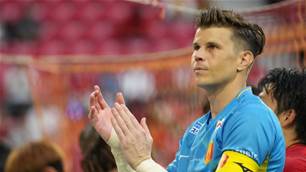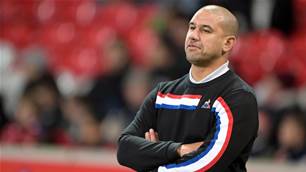RECORD school participation numbers, investment and crowd attendances – but how much do we really know about our growing game?

6. ‘Soccer’ at Lang Park
Rugby league-types like to think of this as their spiritual home but football actually has a longer association with the ground. While league was getting down and dirty at the Gabba, football in the 1920s and 1930s was played at Lang Park (now Suncorp) which originally formed part of the North Brisbane burial grounds. The Queensland Soccer Council and Latrobe Soccer Club were among the early sub-tenants. It wasn’t until 1957 that the precinct became the headquarters for Queensland Rugby League. These days of course it’s also home to A-league club, Brisbane Roar.

7. Captain Blood, sweat and tears
When Aussie Rules legend Jack “Captain Blood” Dyer skited he could train a bunch of VFL players to wipe the floor with the 1964 Dockerty Cup winners, Slavia Port Melbourne, he got more than he bargained for. Dyer inflamed passions by describing football as a game for “big girls” which raised plenty of questions about the virility of his own men when they were duly spanked 8-0. Ron Barassi, one of the most vociferous critics of football, was carried off with an injury that was to end his VFL career.
8. Behind enemy lines
Never ones to shirk a major confrontation, the Socceroos found themselves in the middle of a raging warzone in 1967. The euphemistically named ''Friendly Nations Tournament'' pitted the Aussies against South Vietnam, New Zealand and South Korea where the on-field action was accompanied by the distant sounds of artillery fire. As The Guardian’s Richard Cooke describes: “The birthplace of the Socceroos’ success wasn't Sydney, it was Saigon, where the team won their first international tournament under flare-lit skies rumbling with helicopters with the Vietnam War in full flow.”
9. That other moment
Yes, there was another moment to match the John Aloisi penalty which fired Australia to the World Cup after an agonising 32-year wait. Scottish-born midfielder James “Jimmy” Mackay scored a 30-yard belter to break the deadlock against South Korea and send us to the game’s showpiece event for the first time in 1974. Former Socceroo Doug Utjesenovic described the freakish moment: “There was a free kick, the ball was knocked back and he ran onto the ball. It was a real thunderbolt."
 10. Indigenous stars
10. Indigenous stars
Jade North, David Williams and Kyah Simon are household names these days but the list of talented Indigenous football players is much longer than often imagined. At one point in the 1950s more Indigenous players were playing first grade football in Adelaide than Aussie Rules in Melbourne. We’ve now reached the point where selection of an all-time team would require some controversial omissions. The proud story begins with goalkeeper Bondi Neal who played between 1903 and 1912 on the NSW south coast and Hunter Valley and includes the celebrated Harry Williams who represented Australia 17 times, including during the 1974 World Cup. (Pic
Want to brush up on the Aussie game’s history to dazzle your mates? Then check out Ian’s website at http://neososmos.blogspot.com.au. Ian sourced most of the pics for this article through historic newspapers and the National Library of Australia, with the early women's football photograph via Football Australia.
Related Articles
.jpeg&h=172&w=306&c=1&s=1)
Socceroos prodigy returns to A-League after horror run

Star keeper's exit heralds hero's return at A-League giant













